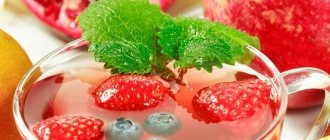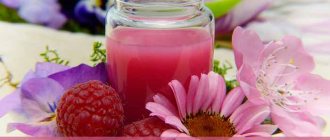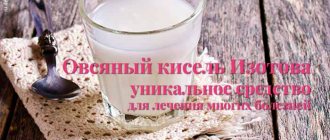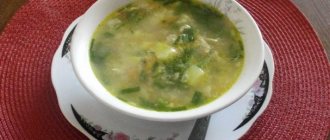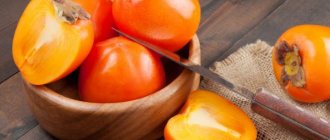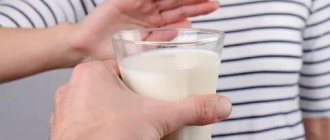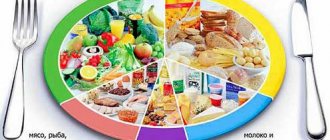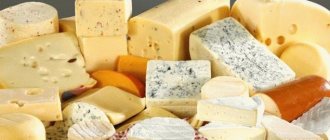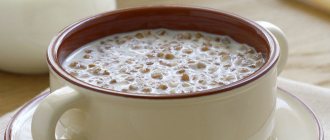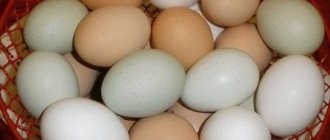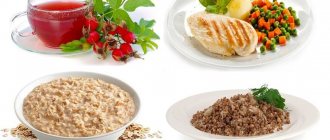Inflammation of the pancreas is a disease whose treatment largely depends on diet. You will have to give up many familiar and favorite foods not only during an exacerbation, but also during remission of the disease. Kissel for pancreatitis is one of the few products that is allowed at any stage of the inflammatory process.
Is it possible to drink jelly if you have pancreatitis?
Kissel is one of the allowed dishes not only for pancreatitis, but also for diseases of the gastrointestinal tract - this opinion is shared by both nutritionists and gastroenterologists. A drink with a viscous consistency is prepared from berries or fruits, from jams or syrups based on them, from milk, to which potato or corn starch is necessarily added, and sometimes flour or grain starter. It is due to the latter substances that a thick jelly-like state is achieved, which gives the drink tenderness and homogeneity.
This product is not easy to use for inflammation of the pancreas; it is even necessary for its speedy recovery. And such an axiom has its grounds. It is known that an organ such as the pancreas is responsible for the production of enzymes that the body needs to break down incoming food. Various disorders that occur within the organ lead to the fact that pancreatic secretion begins to be produced in excess quantities; over time, it accumulates, activating the process of digestion not of the food bolus, but of the pancreas itself. Since this organ has the ability to adapt to different foods each time, the volume of secreted enzymes necessary for its breakdown is constantly changing. This is why diet is so important for pancreatitis, whether in the acute phase or in remission. Nutritionists allow the consumption of only easily digestible foods that do not provoke increased production of pancreatic secretions necessary for their breakdown. Thus, the pancreas is not overloaded and is in a constant state for now, due to which it is restored and accumulates strength for further normal functioning.
Let’s figure out what happens inside when you regularly consume jelly. Since this drink is characterized by a slightly alkaline environment, it neutralizes gastric acid, but at the same time does not increase pancreatic fermentation and, accordingly, does not cause new attacks. Thanks to its jelly-like consistency, jelly envelops the walls of the intestines and stomach no worse than a synthetically created antacid. It has an astringent and calming effect on irritated mucosal tissues, is quite easily absorbed, tidies up gastrointestinal motility, and normalizes stool.
The main advantage of jelly, in comparison with other approved products, is the possibility of using it literally immediately after the end of the crisis days of the disease. As soon as the pain syndrome is relieved, the patient switches to enteral nutrition: he is allowed not only to drink (plain water or chamomile/rosehip decoction), but also to eat those dishes that do not require effort to digest. Just one of them is jelly, which can easily replace even solid food, because this liquid not only saturates the body with vitamins and other beneficial substances, but also creates a feeling of satiety. That is why jelly is ideal for both second breakfast and afternoon snack.
A viscous drink is introduced into the diet of a patient with pancreatitis immediately after the pain syndrome is relieved: that is, on the 2-3rd day, but starting from the 14th day, jelly can already be used as a dessert after vegetable puree, soup, porridge. In addition, you can even season cottage cheese or casserole with this product.
Of course, jelly made from fruits or berries tastes the most pleasant, but milk and oat drinks are no less healthy. In order to slightly improve its taste, it is allowed to add a sweetener. The volume of a single dose of liquid is 200 ml, but jelly can be consumed even several times a day. It must be served warm, but the most important thing is the naturalness of the product. It is best to prepare the drink yourself, because those that are freely available in the store often contain dyes, preservatives and other undesirable additives that can negatively affect the condition of an already weakened organ.
Another advantage of jelly is that it has absolutely no contraindications. The product is not capable of causing a relapse of the disease or causing, for example, an allergic reaction. By enriching the drink with fresh fruits and berries, you can give it the lion's share of usefulness, thanks to which such a drink will perform two very important tasks at once: firstly, it will have a healing effect, and secondly, it will saturate the body with vitamins.
In accordance with this, we can say with confidence that if the pancreas is inflamed, jelly can and even should be consumed.
The benefits of jelly
Kissel made from natural ingredients not only has a pleasant taste, but is also useful for diseases of the digestive system. If you manage to achieve a delicate consistency, it will envelop the mucous membrane of the stomach and intestines, preventing the development of inflammation in it. In addition, its structure promotes rapid saturation when consumed.
Kissel according to Izotov’s recipe is very useful for gastrointestinal diseases
The most useful is Momotov's or Izotov's jelly, which can be prepared at home, requiring only a small amount of oats. When boiled, this cereal produces a large amount of gluten, which envelops the mucous membrane and also collects toxins accumulated in the gastrointestinal tract, helping to remove them.
We can say that any type of jelly for pancreatitis has positive properties and has no contraindications.
Useful features also include:
- The drink can be consumed even during an exacerbation of the disease. This is due to the fact that it does not increase the secretion of pancreatic juice and slows down the inflammatory process. Therefore, if you regularly drink this drink, you can provide the digestive system with conditions in which it can fully recover from illness,
- even if the gastrointestinal tract is disrupted, this drink can be well absorbed and assimilated. This makes it possible to satisfy the feeling of hunger well even in the presence of pronounced inflammatory changes - often one glass is enough for this,
- flaxseed or jelly made from oats covers the mucous membrane with a film that protects it from aggressive factors in the internal environment of the stomach and intestines. This not only helps relieve unpleasant symptoms, but also speeds up recovery,
- a drink made from berries or fruits makes it possible to replenish the lack of nutrients in the body and prevent the development of hypovitaminosis, which often accompanies patients with gastrointestinal pathologies.
Is it possible to use jelly for pancreatitis? Knowing all the positive aspects of this drink, it becomes clear that it is not only not contraindicated for this disease, but can also become part of the treatment along with diet therapy. In order for drinking it to give positive results, you need to know the recommendations for its use.
Useful properties of the drink
There are many options for preparing jelly, so the taste of this drink can be completely different. But despite the list of ingredients that were used to obtain the healing liquid, the jelly remains equally useful, and at the same time it does not lose the healing effect that is so necessary for the pancreas for pancreatitis. But, one way or another, experts give special preference to jelly made from oatmeal. Not only is oatmeal itself very useful for diseases of the digestive system, but using it to obtain jelly and drinking a similar drink for people suffering from inflammation of the pancreas will simply become an indispensable measure to save their body.
Kissel prepared using fruits and berries, milk, oatmeal or flaxseeds has many beneficial properties:
- Suppression of the production of pancreatic enzymes and thereby reducing the frequency of attacks of the disease, as well as the likelihood of developing pancreatic necrosis;
- Alkalinization of the acidic environment of the stomach, reducing the aggressiveness of gastric secretion;
- Creation of a protective film on the walls of the intestines and stomach, which not only prevents injury to the mucous membrane, but also promotes its rapid healing in case of ulcers and erosions;
- Normalization of gastric motility and intestinal peristalsis;
- Accelerates metabolism, improves stool;
- Increased immunity due to the content of vitamins B, A, PP, amino acids: lysine, choline, lecithin, methionine, tryptophan;
- Easy to digest, due to which there is no feeling of heaviness in the stomach, nausea or other dyspeptic symptoms;
- Saturation of the body and satisfaction of hunger;
- Low calorie.
Various flavor variations of the product provide an excellent opportunity to choose for yourself the recipe for exactly the jelly that will suit your individual preferences.
Apple jelly
This drink can be drunk unsweetened only on the fifth day of exacerbation of the disease. After the signs of pancreatitis disappear or weaken, it is allowed to add sugar and other fruits (plums, apricots, etc.) to the drink.
- Water – 2.15 liters.
- Potato starch - 3 tablespoons.
- Fresh apples – 550 grams.
- Sugar – half a glass.
Wash the apples and remove the core and seeds. Cut into slices, place in a saucepan and add two liters of water. After boiling, cook for about 7 minutes and turn off the heat. Dilute the starch with the remaining water and add it into the pan in small portions, stirring. Bring to a boil again, keep on fire for no more than 4 minutes. After cooling, you can drink the drink.
Kissel in the acute stage and period of remission of pancreatitis
The viscous jelly-like drink is one of the few products that is present in the patient’s diet at all stages of the disease. The only exception is those 2-3 days of exacerbation, during which the inflammatory process is at its peak. People with acute pancreatitis are supposed to fast for several days. This is necessary to relieve the load on the pancreas and thus ensure complete rest for it. In the absence of food, the enzymatic activity of the organ stops and the pancreas begins to rest, otherwise, if medical recommendations are ignored, pancreatic secretion increases, as a result of which the process of self-digestion of the organ only worsens.
Currently reading: Is it possible to eat eggs with pancreatitis of the pancreas - raw, quail and reviews
Immediately after this short period, jelly can be added to the permitted water and herbal infusions. Like any other product, it must be administered extremely carefully, a few tablespoons at a time. If the body reacts normally and phenomena such as pain, nausea or diarrhea do not occur, the volume of the drink can be gradually increased. Since in the first week after the crisis the body is severely wounded, and the pancreas is just beginning the process of its recovery, you should not rush to satisfy your gastronomic desires. You will have to wait a while with the most delicious berry or fruit jelly; instead, it is preferable to start with making milk or oatmeal jelly. Under no circumstances should you use store-bought jelly: their chemical additives and dyes are unlikely to be useful in the treatment of pancreatitis.
Some relaxation is allowed with the onset of a period of stable remission. As long as you maintain good health, you can make adjustments to your diet that will help diversify your daily menu. And first of all, you can start with jelly. There are many recipes that make the drink the same in consistency, but completely different in taste. So, jelly can be milk, berry, oat, fruit, flax, sea buckthorn, pumpkin, and also with the addition of honey or raisins. In whatever form it is presented, it should always be served warm: excessively high temperatures are undesirable both for a healthy person and for people suffering from inflammation of the pancreas. In addition, you should not overdo it with the volume of the drink: one serving should be no more than 200 ml. If you really want to please yourself with such a drink, it is better to drink it repeatedly, several times a day, but not more than the specified amount at a time.
What kind of jelly should I drink?
The main products from which jelly is prepared are water and starch. Depending on taste preferences, milk, berry or fruit juice is added to it. If desired, the cook also adds one of the sweeteners: sugar, stevia or honey. Some people prefer to make this drink using flaxseeds or oats. Each type of jelly for pancreatitis is useful in its own way. When choosing a drink, you can rely on your own preferences. However, there are a number of significant points that must be taken into account.
- It is better to prepare the drink entirely yourself, using only high-quality and fresh products.
- It is not recommended to buy powdered jelly in bags and boxes because they contain components that are harmful to this disease. These are flavoring additives, aromas, dyes, citric acid and other chemicals. If you take powdered jelly, you need to carefully study the composition.
- Kissel can have different consistency, which depends on the amount of starch. For pancreatitis, a medium thickness of the drink is recommended. This can be achieved by taking 40 grams of starch per liter of water. Then the drink will be quite fluid. If you take 80 grams of starch, the jelly will turn out very thick. If it’s 30 grams, then it’s semi-liquid.
- Doctors recommend consuming warm jelly for pancreatitis of the pancreas. So it will not irritate the mucous membranes of this organ. It is better to avoid hot and chilled drinks.
Kissel for pancreatitis and cholecystitis
These two diseases differ in nature, but they are closely interrelated and often accompany each other. Inflammation of the pancreas often results from cholecystitis, and, conversely, the inflammatory process of the gallbladder sometimes provokes the development of pancreatitis.
An organ such as the gallbladder is also important for the human body: it is a reservoir for storing hepatic bile, which, mixing with pancreatic bile, is secreted into the duodenum, where it begins the active process of breaking down food. Any disorders that occur within the gallbladder, be it bending of its neck, the formation of stones, contractile dysfunction, or cholecystitis, require not only drug treatment, but also dietary nutrition. In this case, the main guideline of the diet should be abstinence not only from forbidden foods, but also from certain drinks: alcohol, carbonated water, cocoa, strong coffee and tea, concentrated juices.
Drinks acceptable for diseases of both the pancreas and gall bladder include weak tea, Borjomi, dried fruit compote, herbal decoctions, non-whole milk, fermented milk products, apricot and peach juices. But a special place is given to jelly, because no other product has such medicinal and beneficial properties as this drink.
By regularly taking jelly for pancreatitis or cholecystitis, you can expect that this product will have the following positive effect:
- Will reduce the production of pancreatic secretion and thereby reduce the risk of relapse of the disease;
- Will normalize intestinal motility;
- Protects the gastrointestinal mucosa from injury due to its enveloping properties;
- Neutralizes excessively acidic environments;
- Removes toxins and other harmful substances from the body;
- Improves stool;
- Saturates the body with vitamins and amino acids.
You can use jelly at any stage of pancreatitis and cholecystitis: both immediately after an exacerbation and during a period of stable remission. This drink can rightfully be called an indispensable assistant if a person has these diseases.
Methods for preparing jelly
The recipe for the most useful jelly for pancreatitis was suggested by doctor Izotov. To prepare it, you need to take the main component - oatmeal. They, together with water and kefir, form the basis of a medicinal drink. In recent years, many different versions of this jelly have been proposed, which may have significant differences from the original. But they are all very useful for pancreatitis.
You should avoid berry jelly if you have pancreatitis.
To prepare jelly, mix water with kefir and cook until thickened over low heat. You can add a little honey there to taste. You should also add a little oatmeal, the gluten of which should become the basis of the drink. The total volume should be within 250 ml. You should take jelly once a day in the morning. After this, you need to refuse food for 3-4 hours.
If you drink this drink regularly, you can not only get rid of common diseases of the digestive system, but also improve the functioning of other internal organs and systems. This is possible due to its ability to remove toxic substances.
Jelly recipes for pancreatitis
The jelly-like drink is indeed not only tasty, but also healthy. However, not any jelly will have a positive effect on a weakened body: the product that is presented in a wide range in the store will clearly not contribute to overall recovery and improvement of the condition of the pancreas. This is explained by the fact that dry powders often contain many undesirable components in their composition, and, first of all, dyes and preservatives, which can provoke a relapse of the disease. It’s best to prepare jelly yourself - this way you won’t have to doubt its naturalness and benefits for your health. You can use not only berries and fruits, but also milk, oats and honey, jams and jams, jams and syrups, fresh juices, dried fruits, and some vegetables (for example, pumpkin or carrots).
There are many recipes that tell in detail about the process of preparing this healing drink. Let's look at the most popular of them.
Oatmeal jelly according to the recipe of Momotov and Izotov
A drink like jelly has been known since the times of Rus'. Previously, it was called monastic, because it was in monasteries that diseases of internal organs were treated with its help, for this reason the drink was often called “Russian balsam.” In 1992, virologist V.K. Izotov made adjustments to the recipe for preparing classic jelly and developed his own technology. For a long time, the drink was tested by the doctor himself, because it is known that he had to suffer a serious illness - tick-borne encephalitis, after which many complications arose in the form of ischemia and hypertension, urolithiasis, arrhythmia and hearing impairment. The medications that the doctor took in handfuls every day helped little, and at the same time they provoked the development of severe allergies. This prompted Izotov to use folk and exclusively natural remedies. Over time, this method gained quite a lot of supporters who noted an improvement in their well-being and overall health after courses of drinking the miraculous drink.
- To obtain homemade jelly according to Izotov’s recipe, of course, you will have to work hard, but the result is worth it.
At the first stage, you need to prepare everything necessary to create the conditions for fermentation of the future drink. After boiling 3.5 liters of water, the liquid needs to be poured into a five-liter jar. After it has cooled to a temperature of 40 C, pour 500 g of oatmeal into the container, and add about 170 ml of kefir to it, mix the ingredients. Next, the jar must be tightly closed, wrapped in a warm blanket and hidden in a dark place for several days. Over the course of two days, the process occurring in the glass container must be monitored: if the contents bubble, it means that everything has been done correctly and fermentation is proceeding. It is not recommended to keep the liquid for more than two days, as this can significantly deteriorate the taste of the product.
The future jelly must go through two stages of filtration. To complete the first step, you will need another clean jar, a saucepan and a fine-hole colander. The fermented liquid must be transferred to a colander placed over the pan, and when the water has been drained, the dense mass must be transferred to a glass container. At the second stage, water is added to the same jar with the thickened mass. Having closed the jar with a lid and shaken it, we filter the jelly again, after which we move it to its original place - into the jar. The glass container with the contents must be wrapped again and placed in a dark place for 17-18 hours. During this time, the mass will separate into two components: sediment, which is the basis for preparing the jelly, and also liquid, which must be poured into a separate jar. Next, the concentrate is placed in small glass jars and placed in the refrigerator, where it can be stored for no more than 21 days. The final stage is the preparation itself. Pour 500 ml of water into a small saucepan, and add our concentrate to it - 50-100 ml is enough. You need to wait until it boils, but you can’t leave the jelly: it needs to be stirred constantly. After the liquid has boiled, continue the cooking process over low heat until the desired consistency is achieved. At the very end, you can add a little salt to the product.
- There is another option for making homemade jelly, it was developed by Dr. Momotov, who, it must be said, himself suffered from inflammation of the pancreas. The taste of this drink is somewhat different, and it is much easier to prepare. Necessary ingredients: oatmeal (340-350 g) and biokefir (70-100 ml).
Currently reading: Treatment of pancreatitis with propolis - how to take it and reviews
Cereals and kefir should be placed in a clean three-liter jar, which should be filled to the top with warm water. After thoroughly stirring, close the container with a lid, wrap it and place it in a dark place. After this, the first filtration process begins, the contents must be filtered through a fine sieve, and the liquid should be poured into jars, which are then placed in the refrigerator. This is a highly acidic mixture. The second stage of filtration involves washing the mass that remains in the sieve; this must be done in two liters of boiled water. Also, after pouring into jars, put the product in the refrigerator. This results in a low acidity mixture. The convenience of this technique lies in the fact that as a result we have two drinks: one for people with low acidity, and the other for those who need to reduce acidity. In any of these cases, the mixture must be brought to a boil, stirring constantly, and then boiled for some more time. After this, the product can be considered ready.
Lactic
Milk contains easily digestible calcium in large quantities, so with frequent consumption of this drink, the intestinal microflora is normalized, and waste and toxins are quite easily removed from the body. Kissel made with milk will be even healthier. By the way, it can be prepared with the addition of raisins - it will enhance the therapeutic effect of improving intestinal motility and eliminating constipation.
We will need:
- 500 ml milk;
- 150 ml water;
- 15 g potato starch;
- 20 g sugar;
- 10-15 g raisins;
- Vanilla - optional.
First, boil the milk, and in another container, dilute the starch with cold water. After the milk has boiled, add sugar; those who like a special flavor can add vanilla at this stage. After waiting for the substances to completely dissolve, we gradually begin to add starch, and cook the resulting mixture for another 10 minutes. The drink can be taken only when it becomes slightly warm. In the meantime, it is cooling down, you should work on the raisins: after thoroughly washing, they are poured with boiling water, infused for 5 minutes, and only then can they be added to the jelly. The drink is ready.
Linen
Flax seeds are very useful for pancreatitis, so they can also be used to make jelly. They not only relieve the process of inflammation of the pancreas, but also contribute to its speedy recovery. The recipe is simple.
First, grind the flax seeds; this can be done using a blender or coffee grinder. Pour 10-15 g of the resulting powder into 250 ml of water. Such contents must be cooked over low heat for at least 10 minutes, do not forget to stir - this is very important to obtain a homogeneous consistency. After the drink has cooled, you can start drinking it. Experts recommend drinking it 3 times a day, 20 ml, 30 minutes before meals.
Apple
To prepare this type of drink, not only fresh fruits are suitable, but also dried ones. Gastroenterologists allow apple jelly to be consumed already on the 5th day after an exacerbation of pancreatitis, but it is still too early to use sugar to improve taste. Over time, as the symptoms of the disease disappear, the product can be sweetened or a small amount of apricots or plums can be added to the apples.
First, let's prepare the apples: they need to be washed well, peeled and seeds removed. After cutting them into slices, fill them with water and put the pan on the fire. After the water has boiled, the apples need to be boiled for another 7 minutes, and then remove the container from the stove and wait for the broth to cool. Next, pour approximately 150 ml of the cooled drink into a deep plate and gradually introduce starch into it. After stirring the substance until completely dissolved, you can start eating apple jelly.
Cranberry
Cranberry is a rather sour berry, so during the acute phase, consuming jelly based on it is strictly prohibited. Otherwise, the level of acidity in the stomach will increase even more, and bowel movements are likely to become quite frequent. It is better to introduce cranberry jelly into the diet at the stage of remission. Although it is allowed at this stage, it must be taken in small quantities.
Ingredients:
- Liter of water;
- 250 g cranberries;
- 10 g honey;
- 20 g starch.
As always, we start with the base: sort out the berries, wash them well, and then grind them using a blender. Squeeze the juice from the mass and pour it into a separate container. Fill the cake with water and put it on fire. After 5 minutes, the liquid can be removed from the stove, and after another hour it must be filtered and combined with the juice that we drained from the grated berries. The resulting infusion must be placed on the fire again, after boiling, starch is carefully introduced into it, and the entire cooking process must be accompanied by constant stirring. After 2 minutes, the jelly should be turned off and cooled.
Currant
Grind 500-600 g of currants using a blender and, as in the previous recipe, separate the juice from the cake - you can use gauze for this. The mass obtained from the ground berries must be placed in a saucepan and filled with cold water (1 l). After bringing the liquid to a boil, wait another 2-3 minutes. In order not to waste time, you can start preparing the starch: 30 g of this substance must be diluted with a small amount of water. We return to the pan with berries: the boiled cake should be washed and placed on the fire again, a small amount of sugar and starch liquid are added to it. After boiling, wait a few more minutes, and then remove from heat and combine with juice.
Currently reading: Medicines for pancreatitis of the pancreas: names, instructions and reviews
This product is prohibited for use during an exacerbation; it can only be taken during the remission stage.
Cherry
You also need to be careful with jelly made from cherries. The drink is not prohibited for pancreatitis, but it is permissible to take it only if there are no symptoms of the disease: pain in the abdomen, nausea and vomiting, diarrhea, heartburn, etc.
Required components:
- Fresh cherries - 270-300 g;
- Half a glass of sugar;
- 30 g potato starch;
- 100 g sugar;
- A little more than a liter of water.
In order for the product to retain all its usefulness, cherries should not be boiled - just bring them to a boil. The berries separated from the seeds must be covered with sugar (50 g), but we do not throw away the seeds: we will also boil them (in a liter of water with the addition of the same amount of sugar). After 10 minutes, the liquid must be cooled and strained. Meanwhile, dilute starch in 250 ml of boiled water. Next, cherries with sugar, as well as starch liquid, are added to the cooled decoction of the seeds. We wait for it to boil, and then remove the pan from the heat and let the drink cool - this usually takes an hour. The last stage is straining the jelly; upon completion of this action, the product is considered ready.
Strawberry
This is perhaps the most delicious drink; it will undoubtedly appeal not only to adults, but also to children, and for people who are forced to endure food restrictions, the product will become a favorite dessert. In order for the strawberries to retain their pleasant color, it is recommended to use corn starch rather than potato starch during the cooking process.
Fresh berries must be thoroughly washed and mashed, then, together with sugar, put them in boiling water (1 l). While the liquid is on the fire, there are 3-5 free minutes during which you need to prepare the starch. We dilute it in a separate container: first pour corn starch into it, and then add 50 ml of water there. Next, strain the compote and put it on the stove again, carefully pour the starchy liquid into the pan. Stirring constantly, we control the density: as soon as the consistency becomes ideal for you, turn off the heat and wait for the drink to cool.
Pumpkin
Jelly made from pumpkin turns out to be quite interesting. It not only tastes good, but is also healthy, because this vegetable is rich in B vitamins, as well as vitamins A, PP and micro- and macroelements such as iron, potassium, calcium, magnesium, sulfur, phosphorus, sodium, chlorine, fluorine , zinc and copper.
You will need:
- Pumpkin - 100 g;
- Milk with low fat content - 130 ml;
- Sugar and starch - 20 g of each substance;
- Vanilla - optional.
First you should prepare the pumpkin: peel it and seeds, chop it. You need to dilute starch in a small amount of cold milk, pour the resulting liquid into hot milk, in which you first had to dissolve the sugar. Constantly stirring the contents of the pan, wait for it to start boiling. After a few minutes, you can turn off the jelly, but don’t forget to add the main highlight to it - chopped pumpkin. Those who wish can also add vanilla.
Sea buckthorn jelly
Sea buckthorn jelly is especially useful for inflammation of the pancreas. This plant component contains vitamins A, C, B, E, PP, K, fatty acids, tannins, carotenes and carotenoids, as well as micro- and macroelements (calcium, sodium, iron, manganese, silicon, titanium). Sea buckthorn is known for its wound-healing properties, which is why its use is especially important in the presence of ulcerative-erosive damage to the mucous membranes of the gastrointestinal tract.
Ingredients we will need:
- Sea buckthorn - 500 g;
- Sugar - 130-150 g;
- Starch - 50 g;
- Water - a little more than a liter.
Fill the peeled berries with water and put on fire. After 5-10 minutes of boiling, they should be kneaded, and then the resulting contents should be strained through a sieve. Put the cake aside and put the liquid part back on the fire. Separately, dilute the starch with a small amount of cold water and pour it into the broth, but do not forget to stir constantly. After a minute, you can turn off the fire, this completes the preparation of sea buckthorn jelly.
Oatmeal jelly
For pancreatitis, this type of drink is often prepared for the pancreas. The recipe was developed by virologist Vladimir Izotov. His method is quite time-consuming, but very useful.
So, the ingredients for the healing drink.
- Kefir – 100 milliliters.
- Oatmeal – half a kilogram.
- Crushed oat grains - 10 tablespoons.
- Boiled warm water – 3 liters.
Place oats and oatmeal in a large glass container. Pour in warm water and kefir. The container should not be filled to the very top. Leave the container covered in a dark and warm place for 1-2 days. During this time, the mass should ferment: it will begin to separate and bubble. Strain the liquid through a fine sieve; the remaining thick sediment can be thrown away. The cloudy water should be allowed to stand for another day. A white dense mass will form at the bottom, and liquid will remain on top that needs to be removed. Some people do this using a tube. Place the sediment in sterile jars, screw on the lid and put it in the refrigerator. This jelly base can be stored for 3 weeks.
Recommendations for drinking the drink
Despite the fact that the product can be included in the diet for inflammation of the pancreas, it must be consumed correctly: this will help avoid relapses of the disease.
- You need to prepare the jelly yourself. The use of powder mixtures sold in stores is prohibited, since they are simply “stuffed” with dyes, preservatives, flavors and other chemical components.
- You should start taking this product with a small portion. To begin with, it can be only 20-30 ml, then, provided there are no negative reactions of the body in the form of nausea, vomiting, diarrhea or pain, the volume of liquid can be gradually increased. Taking into account normal tolerance, you can drink up to 250 ml of jelly in one meal, and the number of such uses per day can be 3 times.
- A jelly-like drink must be served warm: too cold a temperature of the jelly will affect its consistency, which will be very thick. As for excessively hot temperatures, both drinking and food, this is extremely undesirable for the body, especially if there are diseases of the pancreas or gastrointestinal tract. This circumstance can cause injury to the mucous membranes of the esophagus and stomach, as well as exacerbation of pancreatitis.
- The product must be consumed separately from the main portion. This means that it is not recommended to take it immediately after breakfast, lunch or dinner. It is best if it forms the basis of a second breakfast, afternoon snack or second dinner.
Properly prepared jelly for inflammation of the pancreas will not only add variety to a limited diet, but will also have considerable benefits for the body and will make a significant contribution to the restoration of the damaged organ. A huge number of recipes for this dish makes it possible to do something new and interesting every time, due to which jelly will never become a boring drink and will not lose its relevance for a person suffering from pancreatitis.
Cranberry jelly
It is allowed to drink it in small quantities if the disease has become chronic. In the acute phase, this drink is prohibited, since cranberries have a laxative effect and increase acidity in the stomach.
Kissel is prepared from the following ingredients.
- Water – 1 liter.
- Cranberries – 1 cup.
- Starch - 2 tablespoons.
- Honey - a tablespoon.
Sort the berries and rinse under water. Grind with a blender until pureed. In a separate bowl, dilute the starch with a small amount of liquid. Pour water into a saucepan and boil. Transfer the berry puree and gradually add the diluted starch. Cook for about 5 minutes. After cooling, add honey. Cranberry jelly is ready!
Reviews
Dear readers, your opinion is very important to us - therefore, we will be glad to hear your feedback on the use of jelly for pancreatitis in the comments, this will also be useful to other users of the site.
Lyudmila
I’ve loved jelly since childhood, but I’ve never cooked it myself, because no one else in the family likes jelly except me, and somehow I didn’t want to make a drink for myself. But since I was diagnosed with pancreatitis, all I do is make homemade jelly. I have made a variety of recipes, but most of all I like berry and fruit ones.
Anna
For inflammation of the pancreas, jelly is an irreplaceable thing. Better than any tea, definitely! It really covers well, and this is noticeable in my general condition: I feel very good after using it. Strawberry is my favorite.
Currant jelly
This drink is prepared from the following ingredients.
- Water – 2.3 liters.
- Currant berries - half a kilogram.
- Starch – 85 grams.
- Honey – 3 tablespoons.
Pour 2 liters of water into a saucepan, add berries. When it boils, cook for about 10 minutes and remove from heat. Meanwhile, dilute starch in a glass (300 milliliters) and gradually pour into the pan, stirring constantly. The drink should have a uniform consistency. It needs to be boiled again for a few minutes. After cooling, you can drink the jelly. For pancreatitis, it is useful to add honey to the drink immediately before drinking.
Differences between Izotov and Momotov jelly
Of the two available cooking recipes, you will find exactly your own taste.
As mentioned earlier, the cooking recipe and taste of Izotov and Momotov’s jelly have some differences. Momotov's jelly recipe is distinguished by its ease of preparation, however, it turns out with a sour taste. Izotov’s jelly recipe is characterized by a labor-intensive process of its preparation, which consists of straining, settling, and separating various sediments. However, the end result is a rather tasty drink that does not have a sour taste (reminiscent of cottage cheese). Moreover, from the resulting concentrate it is possible to cook quite a lot of jelly, which is capable of blocking various pains and bloating even with violations of the diet necessary for inflammation of pancreatitis.
What both recipes have in common is that they have no contraindications for use, although everyone knows firsthand that any medicine cures something, while another cripples. Another advantage is that the preparation of oatmeal jelly is a waste-free production, since all unnecessary leftovers are used in the form of kvass or dough additives, even as a treat for your four-legged pets.
So, in any case, try these wonderful oat drinks that truly have miraculous properties to choose the most suitable one for your body and stay healthy always.
Milk jelly
Milk contains a lot of easily digestible calcium. When taken regularly, it can normalize the intestinal microflora, remove toxins from the body and strengthen the immune system. Milk jelly will be even healthier. For pancreatitis, doctors recommend the following recipe.
- Milk (2.5%) – half a liter.
- Water – 150 milliliters.
- Potato starch - 1.5 tablespoons.
- Sugar – 2 tablespoons.
Boil milk in a saucepan. In a separate bowl, dilute the starch with cold water. When the milk boils, add sugar and stir until it dissolves. Then you can gradually pour in the starch mixture. Continue cooking for another 10 minutes. After cooling, you can drink the drink.
If you have pancreatitis, you can and should use jelly. But it is important to follow all the above recommendations so as not to harm the body even more.
Milk jelly
- an original Russian village dish. The first jelly was made from grain crops - oatmeal, rye and wheat - and did not have a sweet taste. Fruit, berry and milk jelly began to be cooked later after potatoes were brought to Russia and potato starch began to be prepared.
What products can you use to cook at home?
In order to prepare jelly, you should use only natural products:
- oats;
- starch;
- fresh fruits and berries or juices and purees from them;
- dried fruits;
- milk;
- vegetables (carrots, pumpkin);
- honey if you need to sweeten the drink.
You should not use citrus fruits or sour berries, such as cranberries, during an exacerbation period.
Fruit and berry jelly
This type of drink is allowed to be taken by patients with pancreatitis only during stable remission. Berries contain a large amount of plant fiber and organic acids, which enhance intestinal motility and increase the secretory activity of the pancreas, therefore, during an exacerbation of the disease, drinks with berries should not be consumed.
It is recommended to use purees, juices, diluted jams, or fresh or frozen berries. Fruit and berry jelly is very tasty and healthy; it saturates the body with vitamins and microelements. The drink is most often brewed with cherries, black currants, strawberries, blueberries, honeysuckle, sea buckthorn, and lingonberries. You should first make sure that you are not allergic to berries.
Milk jelly
This drink can be drunk for any form of disease. It saturates the body with animal protein, calcium, and vitamins.
It also softens and soothes the mucous membranes of the digestive organs, improves motor function, gently stimulates intestinal motility, and eliminates constipation.
It is better to use milk with a reduced fat content, since fatty foods are contraindicated for pancreatitis due to their prolonged digestion and insufficient formation of lipases - enzymes that break down fats. To vary the taste and aroma, you can add spices when cooking milk jelly (nutmeg, cinnamon, vanilla), but only during the period of remission of the disease.
Fruit jelly
Fruit drinks are rich in fiber, vitamins C, E, A and others. They resolve a couple of days after the onset of exacerbation of pancreatitis. To prepare fruit jelly, apples, pears, and peaches are used.
Oats for acute and chronic pancreatitis of the pancreas
For acute and chronic pancreatitis, traditional medicine offers the following recipes:
How to brew correctly
You can brew oats for pancreatitis in the following way:
- Unpeeled oats (1 kg) are poured with water in such an amount that the liquid is 1 cm higher than the product. Then the container is covered with gauze and left in a warm place for 2 days.
- After the specified time, the sprouted grains are removed, washed and ground to obtain a powdery mass.
- About 15-20 g of oat flour is poured into 80 ml of water, and then diluted again with 100 ml of water and brought to a boil.
It is recommended to take the finished decoction 50 ml 3-4 times a day (half an hour before meals). The course of therapy lasts 3-4 weeks.
The product not only helps restore the functions of the pancreas, but also normalizes the functioning of the gastrointestinal tract.
Infusion for pancreatitis
An infusion for pancreatitis is prepared as follows:
- Whole grains (1 tablespoon) are ground in a coffee grinder until flour-like.
- Pour 1 liter of boiling water (it is advisable to prepare the infusion in a thermos).
- Let it brew for 12 hours.
Drink the finished drink 1 glass three times a day (before meals). The course of treatment is 1 month.
Kvass oats
To prepare a tasty and healthy drink you need:
- Rinse oatmeal (0.5 kg) in a sieve and then place in a 5-liter glass jar.
- Add 3 tsp on top. sugar and pour 3 liters of water.
- Cover the neck with gauze and secure it with a thick thread.
- Place in a cool, dark place and let sit for 2 days. By this time, a film should appear on the surface - it must be removed, the liquid drained and the original amount of clean water added again. Add 3 tsp on top. Sahara.
- Place the jar in a dark place for a day.
- Strain and add mint or lemon balm to improve the taste.
It is recommended to take ready-made kvass half a glass three times a day for a total course of 3-4 weeks.
Treatment of the liver and pancreas with oats is possible, but you should not count on quick results - restoration of organs takes a long time (at least 1 month). Decoctions, infusions, jelly and other dishes based on oatmeal are used as therapy. And the main rule is that in order to speed up the recovery process, treatment must be accompanied by a diet.
Flaxseed jelly
This drink is able to eliminate the source of the inflammatory process and protect the mucous membranes of the digestive system. Doctors recommend the following recipe for jelly for pancreatitis.
- Water – 1050 milliliters.
- Flaxseeds – 4 tablespoons.
- Natural honey – 2 teaspoons.
Grind the flax to a powder. Pour into a glass and add 50 milliliters of heated water. Mix well. Boil a liter of water in a saucepan. Transfer the flax mixture, stirring with a whisk. You need to achieve a uniform consistency. When the jelly boils, you can turn off the heat. After cooling, add honey.
Doctors recommend drinking flaxseed jelly in small portions on an empty stomach. It will give results only if taken regularly. It is also important to observe the proportions and cooking technology.
A few simple recipes
There are many recipes for jelly for pancreatitis, depending on the composition of the drink and the form of the disease.
This healing product needs to be prepared in several stages:
- At the first stage, the starter is prepared: 3 cups of oatmeal, pour half a cup of kefir and 3 liters of water, mix everything and leave this mixture in a dark place for 2 days.
- Then the liquid is drained, and 2 liters of water are added to the flakes again, everything is thoroughly mixed and filtered, separating the flakes. The liquid is left to stand for another 12 hours. As a result, a precipitate is separated - this is an oat concentrate, which is used to prepare jelly. It should be stored in the refrigerator for no longer than 3 weeks.
- To prepare the drink in the future, you need to dilute 50g of this concentrate with 1 liter of water and simmer over low heat until thickened. Then, if the stage of the disease is not acute, you can add berry or fruit jam to the jelly, as well as honey to taste.
You can see the cooking process in more detail in this video.
Apple jelly
It is recommended to drink this drink 4-5 days after the onset of an exacerbation. It is prepared according to a simple recipe:
- You need to boil 2 liters of water and put half a kilogram of chopped apples in it, then boil for 10 minutes.
- Remove the apples from the resulting broth and grind through a sieve or chop with a blender, then put them back into the liquid and put it back on low heat. You can add a little sugar.
- Stir 5 tablespoons of starch in a glass of water and pour this solution into the apple broth in a thin stream, stirring it with a spoon.
- The jelly should be cooked for about 3-4 minutes, then it should be cooled and drunk warm.
Cherry jelly
https://www.youtube.com/watch?v=Jw0cXhJQeBg
To prepare it you will also need 2 liters of water, 500 g of pitted cherries, 5 tablespoons of starch.
First you need to boil the berries in water and grind them to a puree. Then add starch dissolved in water to the pan and cook the jelly for 5 minutes.
Using the same recipe, you can prepare cranberry, strawberry, currant, blueberry and other berry drinks.
Bibliography
- Martynov S.M. “Vegetables, fruits, berries = health.” publishing house Enlightenment, 1993, pp. 98–116.
- Ponichuk A.A. Berries for your health: from A to Z. Phoenix Publishing, 2004, pp. 56–76.
- Rogov V.I. Health Without Drugs 2004 pp. 310–363.
- Slavgorodskaya L.N. Berries are healers. Phoenix Publishing 2004 pp. 172–201.
- Kazmin V.D. The healing properties of vegetables, fruits and berries with the application of original recipes for health improvement. Phoenix Publishing, 2007, pp. 32–53.
- Potato starch - 1.5 tbsp (33.5 grams)
- Granulated sugar - 2.5 tbsp (67 grams)
- Milk 3.2% -0.5 liters
- Water - 150 ml (2/3 cup)
- vanillin - optional
vanilla, cinnamon, cocoa.
